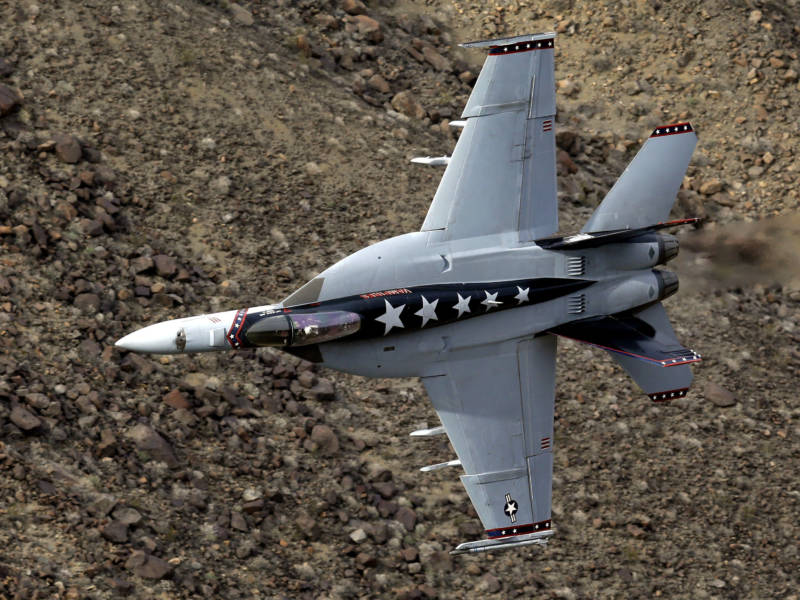The aircraft was based at Naval Air Station Lemoore, Calif., said Navy spokeswoman Lt. Cmdr. Lydia Bock. The squadron is part of an air group attached to the aircraft carrier USS John C. Stennis.
The crash sent dark smoke billowing in the air, said Aaron Cassell, who was working at his family’s Panamint Springs Resort about 10 miles away and was the first to report the crash to park dispatch.
“I just saw a black mushroom cloud go up,” Cassell told The Associated Press. “Typically you don’t see a mushroom cloud in the desert.”
A jet that was following the downed craft pulled up and began circling, Cassell said. He didn’t see any parachute.
His father drove up to the area after the crash and saw a large black scorch mark and shattered parts of the jet scattered throughout the area between the parking lot and lookout, said Cassell. A nose cone from the jet was the size of a bowling ball and the rest of the debris was no larger than a ball cap.
Military jets are not supposed to fly over national parks, but an exception was made for a section of the park that has become a popular site to watch military training flights known as Star Wars Canyon, because the maneuvers resemble scenes from the science fiction films of aircraft speeding through canyons, according to ABC 10 News in San Diego.
NPR’s Greg Myre contributed to this report.
Associated Press reporters Christopher Weber and John Antczak also contributed to this story.

